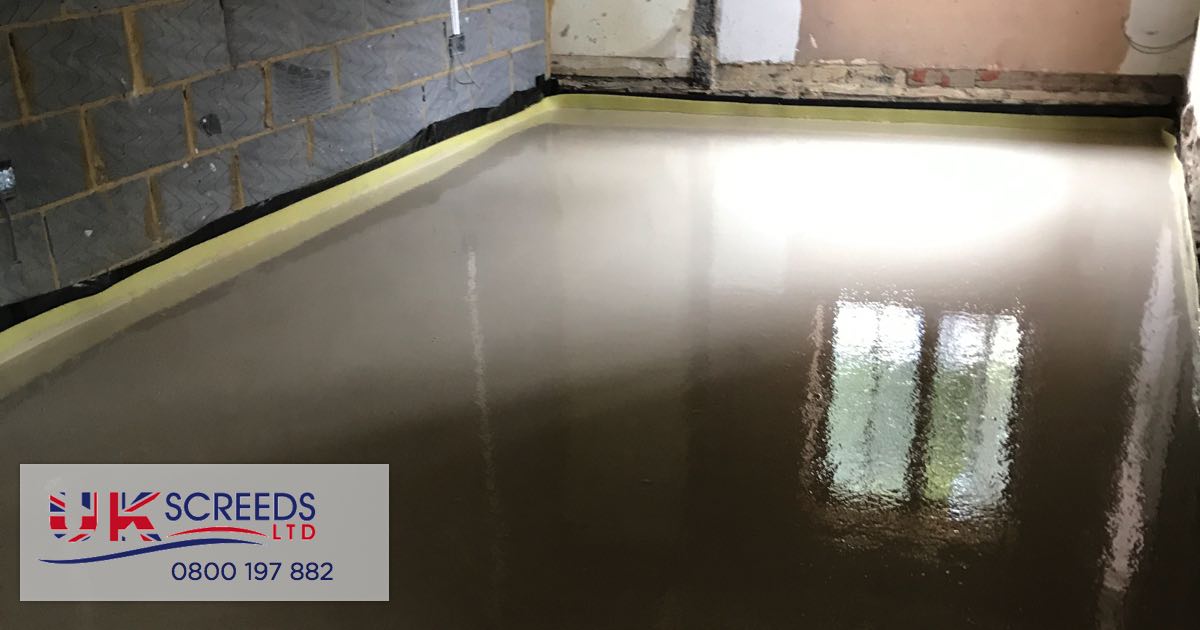Many people believe that underfloor heating systems are a relatively new development and are the height of luxury reserved for high-end properties, but nothing could be further from the truth.
Underfloor heating has been around at the very least since the Roman times, and some reports go back further than that. In those days, channels were cut into the floor of a home and were topped with stone which was then heated from fires in specific places.
Furthermore, while underfloor heating has been thought of as expensive and therefore something of a luxury, the fact is that it has several benefits and can be used for any properties when installed in conjunction with the type of liquid screeds that we provide at UK Screeds. Certainly, architects may think that it is cheaper to install radiators but compared with underfloor heating they are not efficient and cost more to run.

Radiators produce heat which goes straight up to the ceiling and then out into the room at high level, a lot of which is wasted and produces a very uneven heat. For some reason, many radiators are installed underneath windows where the heat can go – literally – out of the window. The effect is not so bad with double glazing, but with single glazing it can be dire. So, all in all, radiators can be quite inefficient.
Underfloor heating, when used in conjunction with UK Screeds’ liquid screed, produces a very even level of heat across the entire room. Furthermore, a liquid anhydrite screed has nearly double the heat transfer efficiency of a traditional sand and cement screed. In addition to that, our liquid screed will totally envelop the heating pipes leaving no gaps, so the heat transfer is 100%. By contrast, it is very difficult indeed to fully cover heating pipes using a sand and cement screed, so it leaves gaps which also contribute to inefficient heat transfer.
Underfloor heating consists of tubing through which water from a heat source is pumped. The tubing has to be fully covered by the screed, so the thickness of screed has to be greater than a screed that is not installed with underfloor heating. This means that it takes longer for the screed to dry, which in turn can lead to delays on site for other contractors.
Proper floor preparation in Essex or any other town is, of course, essential in order to ensure that the screed surface is as level as possible and this is where our liquid screeds score again because they will always achieve SR2 (Surface Regularity 2) and usually SR1, and it doesn’t get any better than that. However, the drying time of a floor screed can add to the cost of a project, particularly where underfloor heating is concerned, for the simple reason that time is money, and if other contractors cannot work because a screed has to dry, it leads to delays.
One of the advantages of our liquid screed at UK Screeds is that they will be dry enough to walk on – although not dry enough to put the final flooring on – within 48 hours or less. This means that there is minimal disturbance to other contractors on site who will be able to carry on pretty much as usual.
However, the quicker the final flooring can be laid the better, and this is why many specifiers require force drying. Our liquid screeds can be force-dried after seven days and can be ready for final flooring within as little as 28 days. This can produce a very significant cost saving for contractors and developers alike.
The simple fact is that the drying times of screeds are usually calculated on a fixed environment of 20°C and relative humidity of 60% for the whole of the drying period. However, we live in the UK and that means that achieving those levels is not all that likely to happen on a constant basis. This is why force drying can be an important part of floor preparation in Essex. The key is to use the correct specialist drying equipment with total control of the environment and appropriate moisture testing. These factors combined can ensure that the drying procedure is conducted with absolute accuracy and will result in considerable savings on the project overall.







